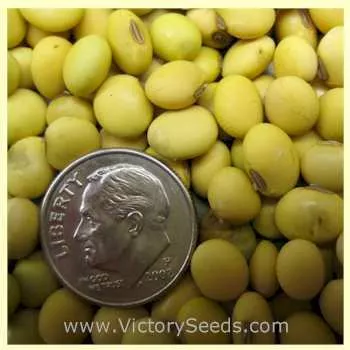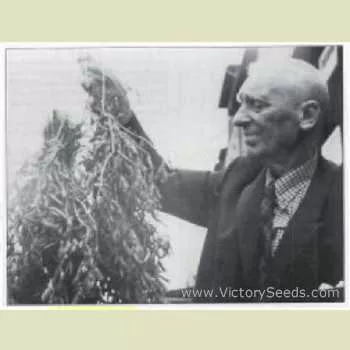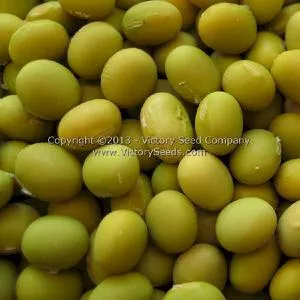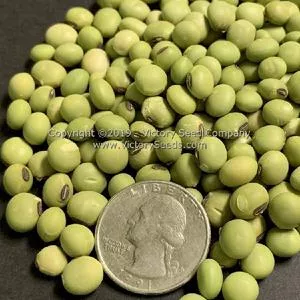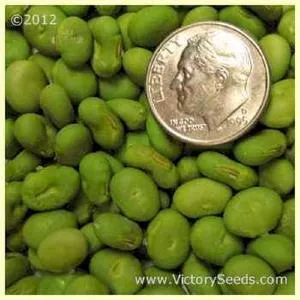

Fiskeby Soybean
Glycine max
Price: $3.95
SKU: 3301051Fiskeby
95 to 105 days, determinate - Research shows that along with being early maturing, the twelve to eighteen inch tall plants are tolerant of many types of stress making it a good choice for gardeners who live in short season locations.
A Swedish variety bred by Sven Holmberg. Can be used fresh for edamame (pronounced "ed-uh-mah-may") or allowed to mature, used dry. 'Fiskeby' is very nutritious with up to 40% protein, as well as being high in calcium, iron and vitamins A, B1, B12 and C.
95 to 105 days, determinate - Research shows that along with being early maturing, the twelve to eighteen inch tall plants are tolerant of many types of stress making it a good choice for gardeners who live in short season locations.
A Swedish variety bred by Sven Holmberg. Can be used fresh for edamame (pronounced "ed-uh-mah-may") or allowed to mature, used dry. 'Fiskeby' is very nutritious with up to 40% protein, as well as being high in calcium, iron and vitamins A, B1, B12 and C.
Genetic Classification: Open Pollinated
Planting Instructions:
Soybeans are a tender plant and should be sown after all danger of frost has passed and the soil has warmed. Planting them at about the same time as corn is a good rule.
Sow seeds about one inch deep, three to four inches apart. Although you can plant in rows, they can be planted densely and allowed to form a canopy. This will help control weed growth. Soybeans are tolerant of drought and poor soil since they fix nitrogen. They will, however, benefit from fertile soil.
Soybean flowers are perfect (self-fertile) and cross pollination is almost non-existent, making saving seed easy. Allow pods to fully develop and dry on the plants.
Sow seeds about one inch deep, three to four inches apart. Although you can plant in rows, they can be planted densely and allowed to form a canopy. This will help control weed growth. Soybeans are tolerant of drought and poor soil since they fix nitrogen. They will, however, benefit from fertile soil.
Soybean flowers are perfect (self-fertile) and cross pollination is almost non-existent, making saving seed easy. Allow pods to fully develop and dry on the plants.
References:
- "Soybean Genetic Treasure Trove Found in Swedish Village," Science Daily, July 31, 2011.
- "History of Soybeans and Soyfoods in Canada (1831-2010)," by William Shurtleff & Akiko Aoyagi, Soy Information Center, 2010
Notes:
- Fiskeby is a small town in east-central Sweden on the Gulf of Bothnia. For perspective on where on the globe this relates to the United States, Fiskeby is at about 58.6 N Latitude, which passes just north of Juneau, Alaska near the southern tip of the Kenai Peninsula
- Sven Holmberg, was once a leading
plant breed in Northern Europe. His long career, beginning in the 1930s, spanned nearly fifty years. His primary focus was on breeding soy varieties for the extremes of the far north and his successes assured his position in the history as a preeminent soybean breeder.
Customer Reviews:
Do you have experience with this one? 📝 📣 Write a review!
No reviews have been posted yet.

